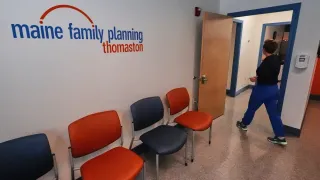November 30, 2020
How Long? Here's a Tool Designed to Help Evaluate Your COVID-Risks
READ TIME: 2 MIN.
An MIT professor questions the efficacy of the CDC-guideline that suggests a distance of 6-feet between individuals to protect against the virus. But winter is fast upon us, and John Bush, a MIT professor who teaches applied mathematics, "calls such a rule of thumb 'dangerous' and 'overly simplistic,'" writes a report on the website Fast Company. "Because when you're inside, microscopic droplets are trapped right alongside you in a confined space, and standing six feet away from someone doesn't stop the SARS-CoV-2 virus from floating in the air of your living room where you can potentially inhale it."
Bush and his MIT colleague MIT colleague Martin Z. Bazant came up with a complex mathematical model "which simulates the fluid dynamics of virus-loaded respiratory droplets in any space, from a cozy kitchen to a gigantic concert hall." And have made it accessible to the general population, they have developed an app that allows the user to evaluate their COVID-risk by entering information about their situation – room size, # of people, activity.
Follow this link to use the tool.
"The tool assumes one person in a room with you has COVID-19. Then, it hands you an incredible amount of control to tweak the variables at play," writes Fast Company. Factors include square footage of the space, the number of people in the space, humidity, and details of human behavior, such as mask wearing or singing.
Fast Company tested a Thanksgiving dinner in a 20-foot-by-20-foot dining room with a group of 10 people. People talked normally. Nobody was wearing masks since they were eating. The air was of average humidity.
"Based on this model, it should be safe for this room to have: 10 people for 18 minutes." But if they wore masks and no one ate but spoke through coarse cotton masks, they only got two more minutes of safety. An open window added six more minutes.
"But what if they were wearing masks?" you ask. Good question. Let's assume no one ate and instead talked through coarse cotton masks. Cotton masks bought them two more minutes of safety. Opening the windows to increase ventilation helps more. It buys another six minutes.
"However, upgrading from coarse cotton masks to surgical masks increased the number to a whopping two hours. But with a catch: If those surgical masks are worn improperly by half of the people–say, the masks fit loosely or the wearers' noses are sticking out–the safe time plummets back down to 32 minutes. Human factors matter a lot," Fast Company adds.






